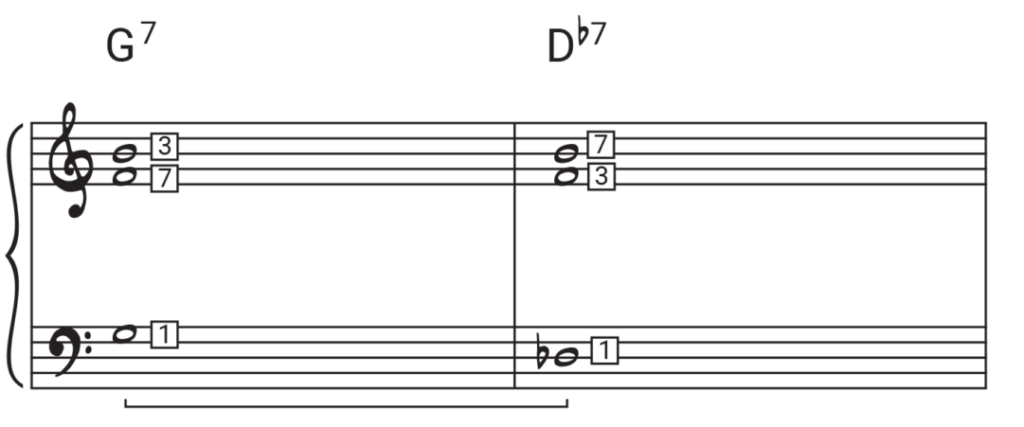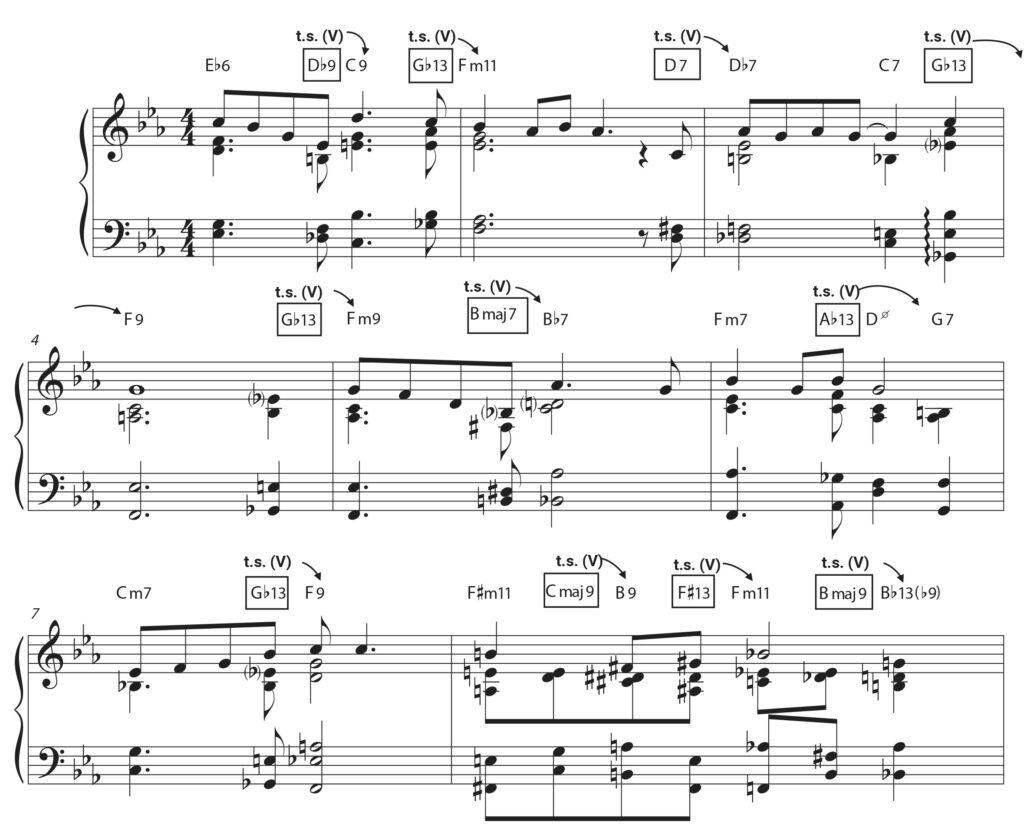Tritone substitute chords have a magical ability to add richness and complexity to chord progressions. In this blog post, we will explore how to use tritone substitute chords, using the jazz standard “My Ideal” as our musical playground.
What is a tritone substitute?
In jazz harmony, a tritone substitute dominant chord is a dominant chord that is a tritone (a #4 interval) away from the original dominant chord. For example, the dominant of C is G7. The tritone substitute for G7 is Db7, as the roots of these chords are a tritone away from each other, and share the same 3rd and 7th, albeit flipped:

Both G7 and Db7 “want” to resolve to C major. Thus, to easily find the tritone substitute dominant seventh chord, you just take the note that’s a half step above your target chord. If you want to resolve to C major, Db7 (half a step above) is your tritone substitute dominant chord:

Melody and Basic Chords
Let’s begin by examining the melody and basic chords of the first 8 measures of “My Ideal” with piano voicings. This will serve as our starting point and provide a reference for the subsequent examples. Each of the chords in this example is a so-called “target chord” for our tritone substitute dominants.

Adding Tritone Substitute Dominants
Now, let’s enhance the harmonic landscape by introducing tritone substitute dominant chords before each of the target chords in the original example. By doing so, we infuse the progression with tension and colorful sonorities. Remember, you can easily find the tritone substitute dominant chord (t.s. V) by taking the note that’s half a step above your target chord.

Note that that are a few places where a dominant seventh chord doesn’t work. For example, in measure 5, the tritone substitute dominant of Bb7 would be a B7 chord, but the melody has a Bb. This Bb would clash with the A natural of the B7 chord, so in this case, I used a Bmaj7 chord, which has a A# instead, which fits the melody (Bb, same note as A#) perfectly. Major seventh chords can also function as tritone substitute chords!
Another exception is the half diminished chord in measure 6, Dø. Dø is part of a ii – V progression in C minor (Dø – G7 – Cm). When encountering a half diminished chord, a tritone substitute dominant chord often works better when attached to the V chord (G7) of this progression, rather than the ii-chord (Dø). You can still put it right before the half diminished chord.
Video example
Below is the video version of both examples of “My Ideal”, one with basic chords, and one with tritone substitutes:
Full Reharmonization
In my full reharmonization of “My Ideal” I’ve used many tritone substitute chords, but also incorporated other reharmonization techniques like passing chords, walkups, and chromatic movements. Many of these can be found in my free Reharmonization Quickguide. Give it a listen:
Conclusion
I hope you found these insights into utilizing tritone substitute chords valuable. Incorporating these substitutes into your arrangements unlocks a multitude of harmonic possibilities, and as a jazz pianist, I find myself using them frequently in my reharmonizations. Becoming comfortable with tritone substitutes is a crucial skill to develop. If you have any thoughts or questions, please feel free to share them in the comments below.
Happy harmonizing!


2 Responses
Very helpful!
It is the best way for a make a piece very interesting expecially in playing ballads
I’m glad you found it helpful, Sandro! Indeed, it’s a tried and true method that reliably creates interest and nice harmonic movements.